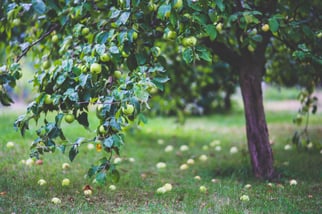On a Whim and a Wish and a Chase
Scotland is magnificent, with lochs and mountains, Highland cattle, heather, castles, kilts, and bagpipes. I fell in love with the country in 2000 while Duncan and I traveled up the East Coast and down the West Coast on our three-week honeymoon. It was double love for me.
The Charm of Scotland
The Scottish people are delightful, and we were welcomed and urged to stay longer at all the bed and breakfast inns where we stayed. We often stayed in farm cottages with several children, and the children, too, took delight in our company. I didn’t always understand the Scots brogue, but Duncan seemed to always understand. I think it’s because he was an avid reader of George MacDonald, a Scottish writer from the 1800s.
A Delightful Stay in Cullen
Cullen was our next stop. It’s a quaint village on the North Sea coast. We spent a delightful night and breakfast at a small bed and breakfast there. Breakfast was in the conservatory overlooking the harbor. With that setting, we ate buttery scones and a quart of the most delicious homemade raspberry jam (I’m still ashamed of my way-too-big American appetite).
After breakfast, we ventured into the village to look at the shops and buy our picnic lunch, which always seemed to consist of bread, marvelous cheeses, and a bottle of wine. Then, we began our daily habit of exploring backroads. Duncan was never afraid to try a road, even if it meant traveling over cattle passes.
Chasing a Dream
Now, Duncan was fond of Single-Malt whiskey, MacCallan being his favorite. We turned the corner of these picturesque roads with stone walls on one side and hillside on the other when Duncan spotted a small van with the Macallan Distillery marked on the side. Before I knew it, we were turned around and following the van. Surely, he said, it will lead us to the Macallan Estate! And lead us it did, right onto the estate.
Once in the reception area, we learned they had finished their last tour of the day. Then, a couple from France walked in, and on a whim, they said, “Okay, let’s give you a tour!”
The tour fascinated all of us. The tour guide/Master drew wee drams of whiskey from oak barrels (these oak barrels once housed sherry) and then asked us to nose and identify as many aromas as possible. I remember naming six, which was a challenging feat. But the Master, if my memory serves me correctly, identified over 60; no, I think it was over 90. We ended our tour with Duncan purchasing an extraordinary vintage bottle.
Afterward, we picked out a lovely spot under a large shade tree and had our picnic lunch. I still remember the double cream brie—it was heaven.
Take a look at your fencing options at Louis Page. We’re the experts and will deliver the goods!
Warm regards,
Debbie Page
CEO, Louis E. Page Inc – Woman-owned business and Family-owned since 1893. (True! That’s 131 years owned and run by our family)













